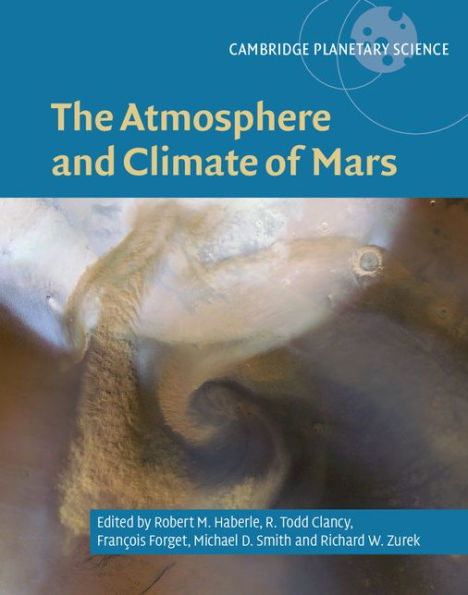Table of Contents
1. Introduction Robert M. Haberle, R. Todd Clancy, François Forget, Michael D. Smith and Richard W. Zurek; 2. Understanding Mars and its atmosphere Richard W. Zurek; 3. History of Mars atmosphere observations Philip B. James, Philip R. Christensen, R. Todd Clancy, Mark T. Lemmon and Paul Withers; 4. Thermal structure and composition Michael D. Smith, Stephen Bougher, Thérèse Encrenaz, François Forget and Armin Kleinböhl; 5. Mars clouds R. Todd Clancy, Franck Montmessin, Jennifer Benson, Frank Daerden, Anthony Colaprete and Michael J. Wolff; 6. Radiative process: techniques and applications Michael J. Wolff, Miguel Lopéz-Valverde, Jean-Baptiste Madeleine, R. John Wilson, Michael D. Smith, Thierry Fouchet and Gregory T. Delory; 7. The Martian planetary boundary layer Peter L. Read, Boris Galperin, Søren E. Larsen, Stephen R. Lewis, Anni Määttänen, Arakel Petrosyan, Nilton Renno, Hannu Savijärvi, Tero Siili, Aymeric Spiga, Anthony Toigo and Luis Vázquez; 8. Mesoscale meteorology Scot C. R. Rafkin, Aymeric Spiga and Timothy I. Michaels; 9. The global circulation Jeffrey R. Barnes, Robert M. Haberle, R. John Wilson, Stephen R. Lewis, James R. Murphy and Peter L. Read; 10. The Mars dust cycle Melinda A. Kahre, James R. Murphy, Claire E. Newman, R. John Wilson, Bruce A. Cantor, Mark T. Lemmon and Michael J. Wolff; 11. The water cycle Frank Montmessin, Michael D. Smith, Yves Langevin, Michael T. Mellon and Anna Federova; 12. The CO2 cycle Timothy N. Titus, Shane Byrne, Anthony Colaprete, François Forget, Timothy I. Michaels and Thomas H. Prettyman; 13. Atmospheric photochemistry Franck Lefèvre and Vladimir Krasnoplosky; 14. Upper neutral atmosphere and ionosphere Stephen W. Bougher, David A. Brain, Jane L. Fox, Francisco Gonzalez-Galindo, C. Simon-Welund and Paul Withers; 15. Solar wind interaction and atmospheric escape David A. Brain, Sergey Barabash, Stephen W. Bougher, Firat Duru, Bruce M. Jakosky and Ronan Modolo; 16. Recent climate variations François Forget, Shane Byrne, James W. Head, Michael A. Mischna and Norbert Schörghofer; 17. The early Mars climate system Robert M. Haberle, David C. Catling, Michael H. Carr and Kevin J. Zahnle; 18. Future prospects Robert M. Haberle, Todd Clancy, François Forget, Michael D. Smith and Richard W. Zurek; Index.



